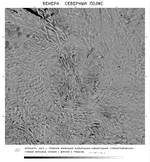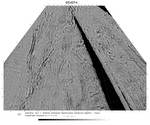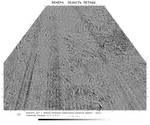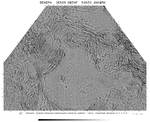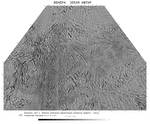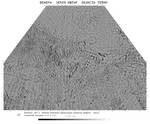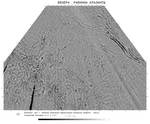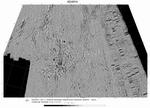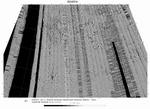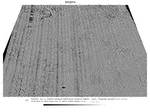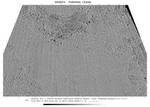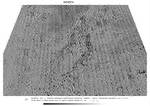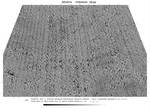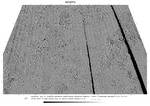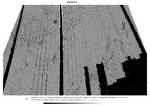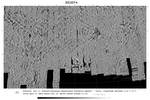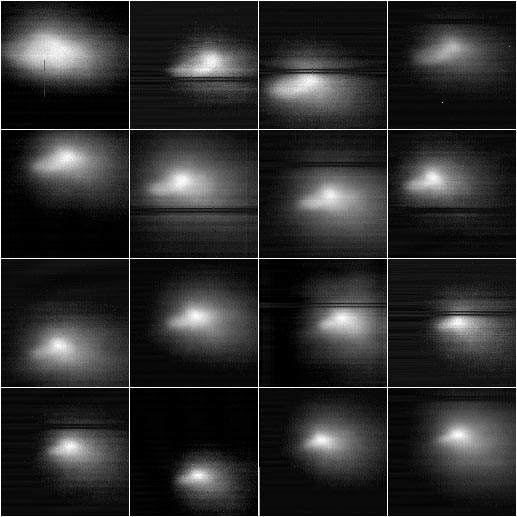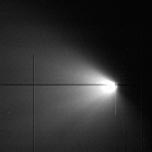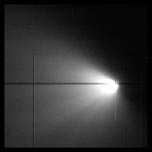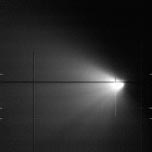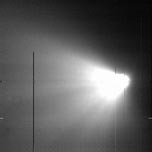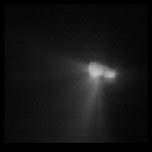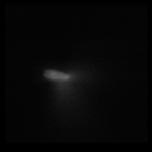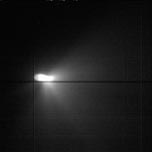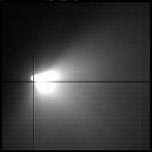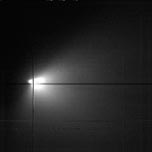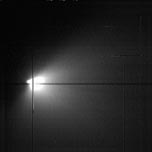Most of what we know about Venus is derived from the intensive Soviet study of the planet. The only existing images from the surface were returned from four of their landing craft.
Attempts to carry phototelevision cameras to Venus in 1962 and 1965 failed, but the Venera-9 orbiter performed the first long-term imaging survey of cloud circulation, in 1975.
Venera-9Venera-9 was the first lander to photograph the surface of Venus, on October 20, 1975. An optical-mechanical camera, scanning back and forth, returned almost two panoramas of a rocky hillside. The camera system was developed by A.S. Selivanov's team at the Institute of Space Device Engineering. A second camera, facing the opposite side, malfunctioned when atmospheric pressure prevented the ejection of its lens cap.A digital video signal was transmitted from the lander to the orbiting main spacecraft and recorded on tape. It consisted of 6 bits per pixel (plus a 7th parity bit) encoding a logarithmic brightness value. Each scanline consists of 128 pixels, 11 of which are calibration and synchronization sent during the return stroke of the scanner. This was relayed in real time and retransmitted a few times from the tape recording. The complete video transmission seen below is reconstructed from digital data and photographic records. After completing one panorama, the scanner reversed its motion, generating a second partial panorama, which appears upside down:
 Complete Panoramic Transmission From Venera-9
Complete Panoramic Transmission From Venera-9
Some of the raw digital data from Venera-9 was found on a tapes exchanged between the Soviet Union and Brown University. It includes the first full panoramic sweep with periodic telemetry bursts, and a second version in which some telemetry bursts have been replaced with sections of the second panorama.
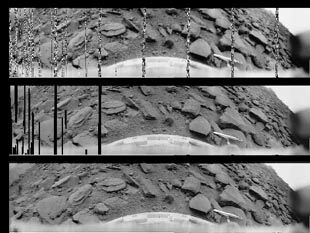
Processed Venera-9 Panorama The upper image is the raw 6-bit data. The center images include the telemetry brust replacements, with remaining bursts blacked out. The 6-bit values have been transformed to linear brightness, using the published photometric function of the camera, and then converted to sRGB standard form (gamma 2.2). In the final version, I filled in missing regions, using Bertalmio's inpainting algorithm. The Venera-9 orbiter was the first artificial satellite of Venus, and performed the first long-term survey of cloud structure and dynamics. Two linear optical-mechanical cameras recorded simultaneous violet and ultraviolet images, sharing the tape recorder and electronics for the video from the lander. 17 cloud panoramas were returned from October 26 to December 25.
Panoramas could be returned in 256 pixels/line primary or by command could be retransmitted at twice that resolution. During 30 to 50 minute surveys, typically 3000 to 6000 scanlines were recorded. These raw digital images were highly elongated. The few published images (above) have been contrast enhanced and horizontally compressed to reduce noise and geometric distortion.
Part of the October 26 panorama was retransmitted at the higher resolution. Two different photos, seen above, indicate that the original digital image contained detail and dynamic range that is not well captured by printed pictures. The second picture shows the full video signal, including the sync signal generated during the return stroke of the camera.
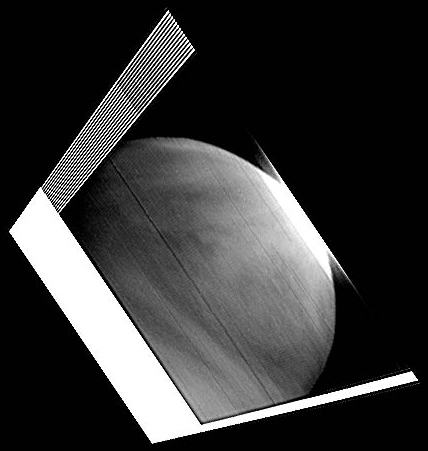
Venera-10Venera-10 landed on October 23, 1975 and returned almost two scans of the terrain. A second camera malfunctioned. See the section on Venera-9 above, for more explaination about the video signal and its processing.

Complete Panoramic Transmission From Venera-10 Venera-11 Sky SpectraVenera-12 landed on Venus on December 21, 1978, and Venera-11 landed on December 25. All of the color panoramic cameras failed, due to atmospheric pressure.V.I. Moroz and his team at IKI designed the IOAV spectrometer which measured the sky at 20 nanometer wavelength intervals and in multiple directions. Below is displayed the zenith sky color as measured during the descent of Venera-11. The small images show the form of the spectrum from 360 to 830 nm, with the area under the curve filled in with the corresponding sRGB standard value. Actual spectral data extended well into the infrared, to identify gas absorption bands. The spectra are converted to XYZ color space via the usual CIE tables, and then converted to a standard gamma corrected RGB space defined for televisions and monitors.

The increasingly orange color is due to rayleigh scattering by the thick atmosphere, and possibly an additional unknown blue-absorbing gas component. Brightness is normalized. The text color for these web pages was chosen to approximate the Venera-11 sky color. Venera-13The descent module of Venera-13 landed on Venus on March 1, 1982. Two optical-mechanical cameras repeatedly scanned 180° or 60° through clear and colored filters and at higher resolution than the Venera-9/10 system. The camera system was developed by A.S. Selivanov's team at the Institute of Space Device Engineering. The main spacecraft, on a flyby trajectory, remained in radio contact with the lander for 127 minutes. It relayed the video to Earth as a phase-modulated digital signal, at 9 bits per pixel. This copy of the complete video signal is my reconstructed from three transmissions.The increased images noise near the end of transmission is due to the relaying spacecraft moving out of range. It is not the result of the lander overheating, although that must have eventually occured. These panoramas have been adjusted for contrast and sharpened, but are not linearized.
The Venera landers transmitted digital images with a depth of 9 bits and an approximately logarithmic encoding of photometric brightness. Multiple panoramas were scanned by the camera, including some with red, green or blue glass filters in place. The entire transmission was relayed to Earth in real time, and also replayed from digtal tape recordings onboard the Venera spacecraft. This permits the reconstruction of an almost noiseless version from the multiple transmissions. An accurate conversion of that encoding to linear brightness has been derived, using calibration information included with the images. Note the improved rendering of shape and improved details in very dark and very light portions of the image.
The original Soviet versions of these images included a full panorama from clear-filter images, and color panoramas from the red, green and blue-filter images. The signal to noise was poorer for the color images, because they were much darker. I combined the two types of panoramas by adding the chroma signal (in CIE Lab color space) from the color images with the luminance from the clear images.
The Venera panoramas are spherical projections. They can be remapped to perspective projections and overlayed (using Adobe Photoshop CS2) to produce views that give a better subjective impression of the Venusian surface. In the overhead view, notice the shadowing around the lander. Surface illumination is from the uniformly bright hemisphere of the sky, but the lander blocks part of the sky from nearby ground. Venera-14Venera-14 arrived four days after Venera-13, and its descent module landed on March 5. It remained in contact with the flyby module for 57 minutes. My clean-up is still in progress on the last part of Panorama 2, a long tedious process of phase-shift correction and merging of four different retransmissions of the video signal. See the above section on Venera-13 for a more complete explaination of the video signal and image processing.
The zenith sky spectra (360 - 830 nm) for three Venus landers are shown below, as measured by the IOAV and IOAV-2 spectrometers. Variations in color are due to differing atmospheric depths and sun angles at the landing sites. Colors are sRGB calculated from spectra. Sky color was also measured by Venera-9 and 10, with a four-filter photometer, and sky brightness was measured by two photometers onboard Venera-8.
Venera-15 and Venera-16The twin orbiters, Venera-15 and Venera-16, carried out the first high resolution survey of the surface of Venus, using synthetic aperture radar and radar altimetry. Surveying took place from November 11 1983 to July 10 1984, covering the northern cap of the planet down to about 25° latitude. The radar system was developed by the team of O.N. Rzhiga at the Institute of Radioengineering and Electronics.3200 radar looks were gathered during close approach and transmitted to Earth during the remainder of each orbit. These were assembled into strips and mosaic images ("quads"), seen below at 30 percent of original size. Conformal projections are used, stereographic for the Quad 1, and Lambert-Gauss conical projection for the rest:
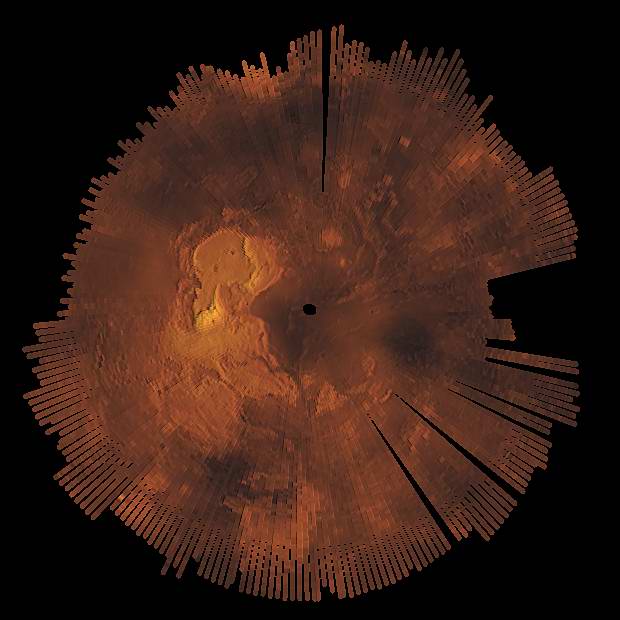 Map from Venera-15/16 Altimeter Data
Map from Venera-15/16 Altimeter Data
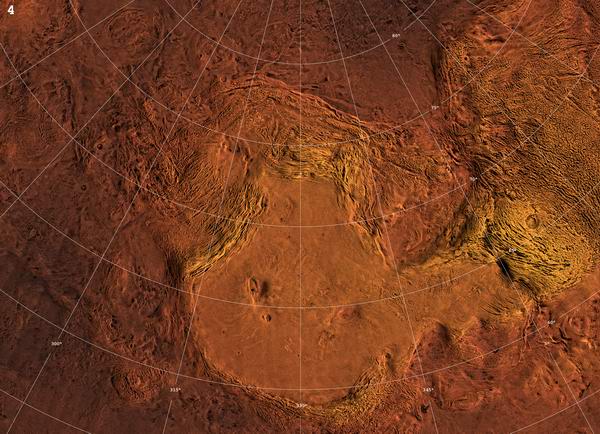 Improved visualization of Quad 4
Improved visualization of Quad 4
Combining the altimetry and SAR image data provides a greatly improved visualization of Venus from Soviet data. This processing includes hypsometric coloring and hill shading. Vega-1Vega-1 flew by Venus, depositing a Venera lander and balloon probe, on June 11, 1985. No images were taken at Venus, and landings were made on the night side. Vega went on to encounter Halley's Comet on March 6, 1986. A solid-state CCD camera photographed the comet through a telescopic (1200 mm) objective, aimed automatically with the aid of a wide angle camera. Images were taken though a changing set of visible and infrared filters. The television experiment was carried out by teams at the Hungarian Central Research Institute for Physics (KFKI), the Soviet Space Research Institute (IKI) and the French Laboratoire d'Astronomie Spatiale.Images could be transmitted at the full 512 × 512 CCD resolution, or as 256 × 256 or 128 × 128 pixel images centered at the brightest point on the full array. Vega-1 returned a large number of images, mostly in the 128 × 128 mode. 309 images from Vega-1 have been released, taken from March 5 to March 7. Of these, 32 of the most interesting were chosen by the KFKI for special filtering and enhancement:
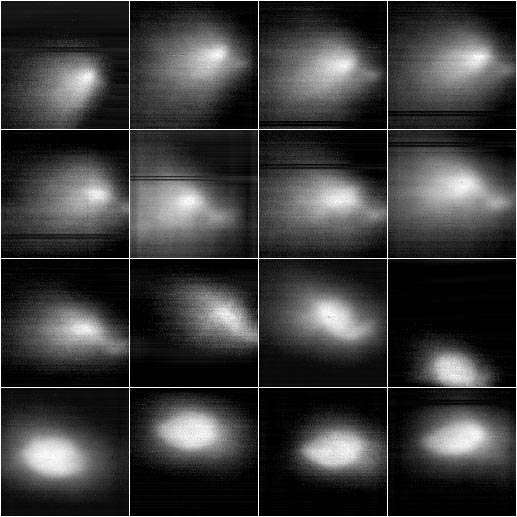
Vega-2Vega-2 encountered Venus on June 15, 1985, and rendezvoused with Halley's Comet on March 9, 1986. Probably the single most interesting image was this one, of the potato-shaped nucleus emitting luminous jets of gas:
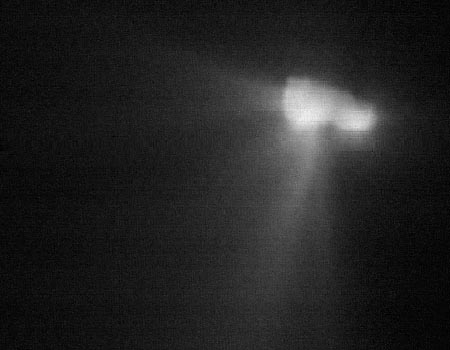
251 images have been published from March 7 to March 10. During the close encounter, 11 images were transmitted in the full-sized 512 × 512 mode:
AcknowledgementsThanks to Oleg Rzhiga, Piotr Masek, Robert Sucharski and Peter Ford for their help in obtaining the Venera-15/16 radar surveys. Thanks to Arnold Selivanov, Yuri Gektin, Vladimir Kurt and James Head for their help in finding the Venera-9,10,13 and 14 surface images. The complete Venera-9 and 10 transmissions were assembled in part from processing of photographs in Pervye Panoramy Poverkhnosti Venery. Thanks to Basil Pivovarov and Andrew Ball for help in obtaining better quality images from the Venera-9 orbiter. Vega images were compiled by The International Halley Watch. |

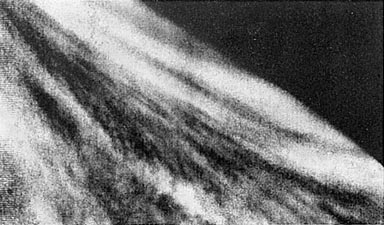
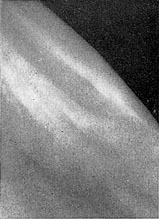
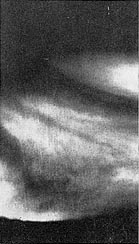
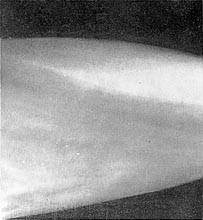



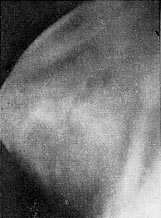 Dec 11
Dec 11
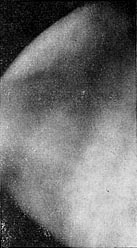
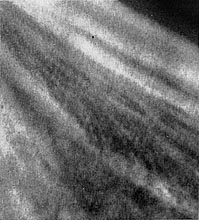
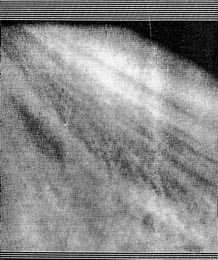

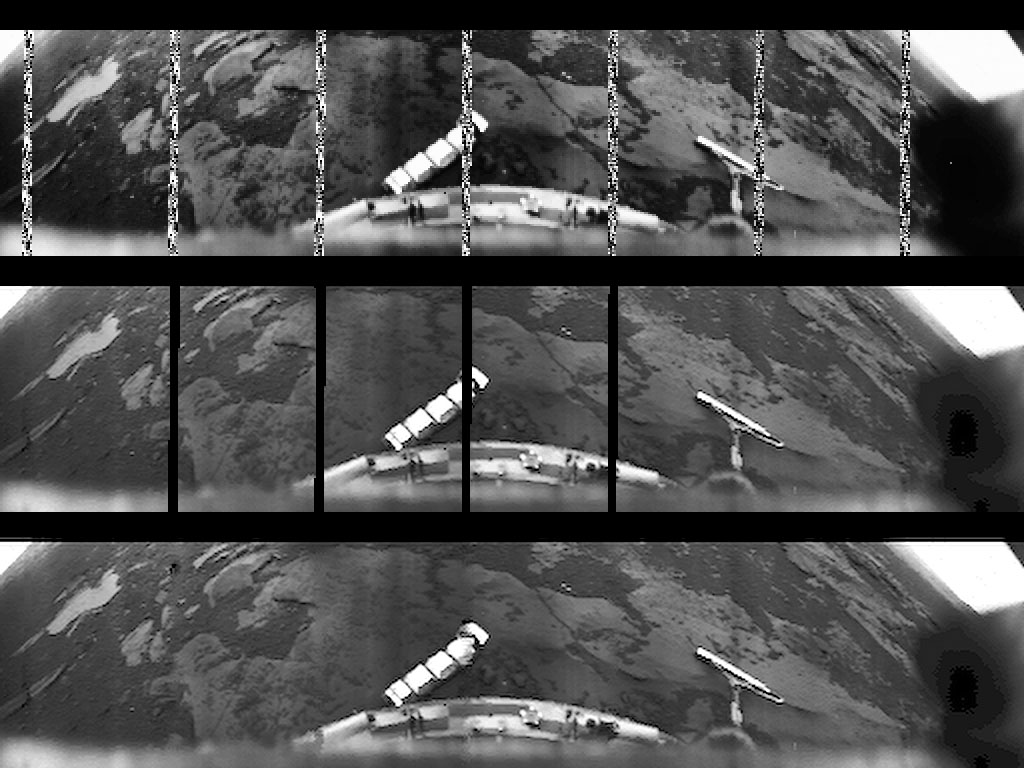








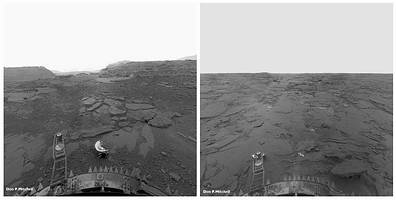






 Venera-11 Sky
Venera-11 Sky
 Venera-13 Sky
Venera-13 Sky
 Venera-14 Sky
Venera-14 Sky
